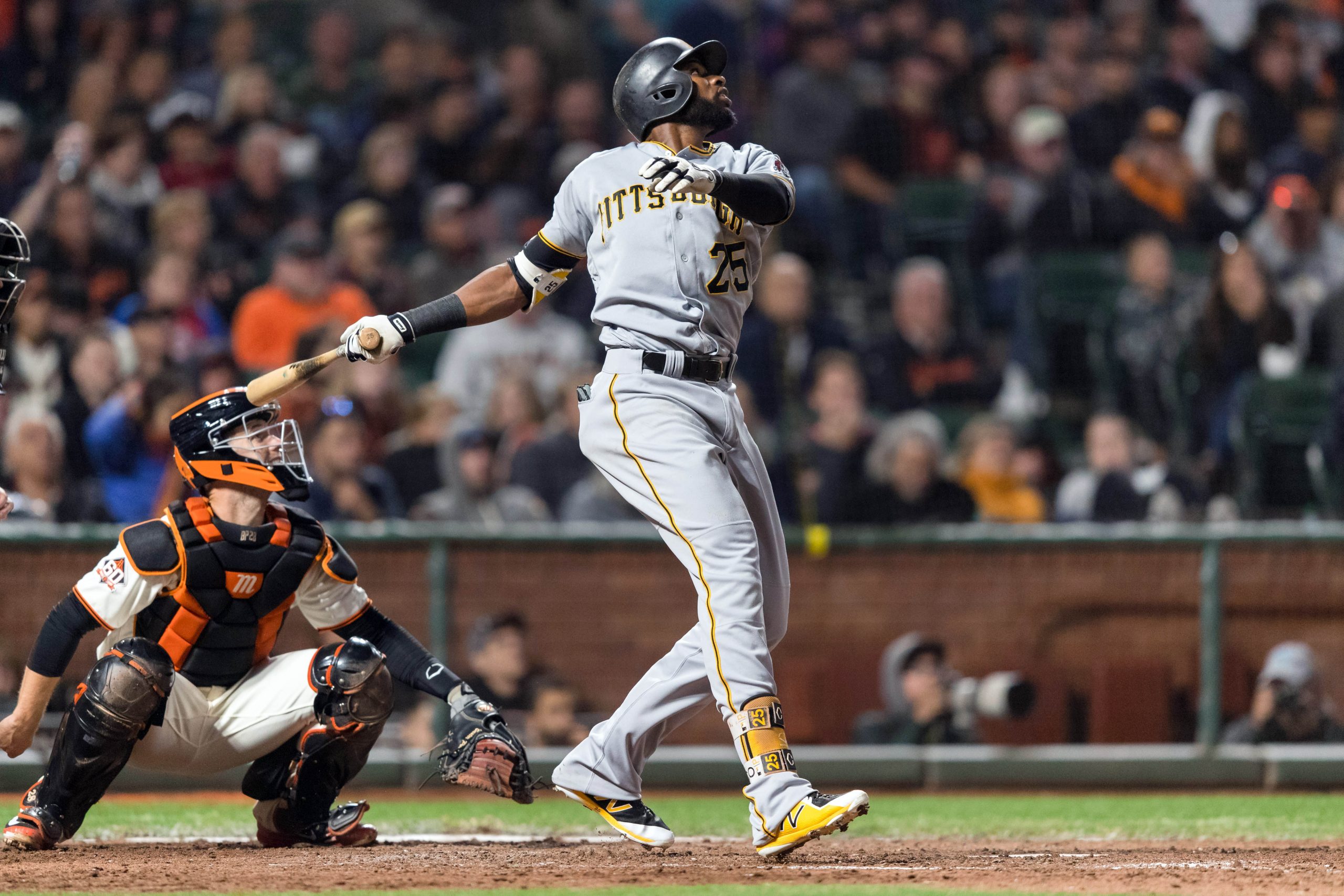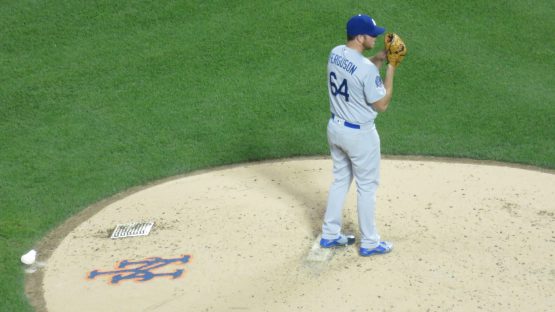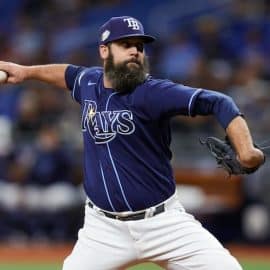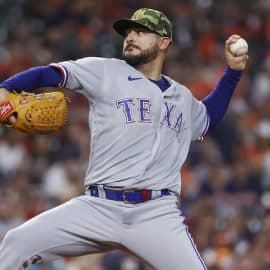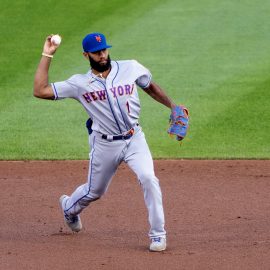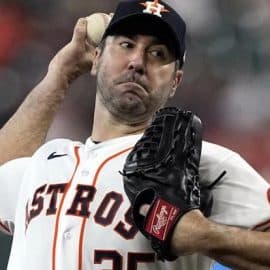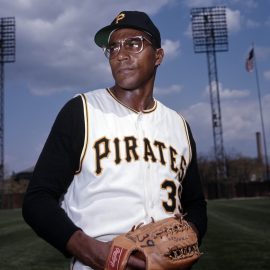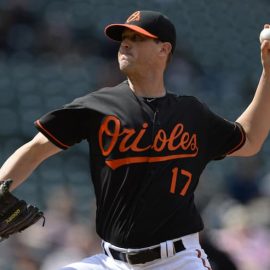A glaring factor in the Pittsburgh Pirates lack of success in 2017 was their complete lack of power. This problem seems to have been solved in 2018 but is it sustainable?
Last season the Pirates infamously ranked as the second to last in both the NL and Majors as a whole in home runs hit; tallying just 151 long-balls, 52 fewer than the league average. This lack of power was has even more glaring considering the all-time record for home runs hit across baseball was set last season.
This season, however, the Pirates seem to have solved that problem. Going into action Monday, the Pirates have launched 126 home runs, just 3.5 off of the NL average and 9.5 less than the MLB average, good for 9th in the NL and 20th overall. While by no means a dominant performance, relative to their basement dwelling last season in terms of homers, being middle of the pack is quite an improvement.
What is so surprising about this surge is that it has been a group effort, the bench, for instance, has accounted for more than 30 percent of the team’s home runs. Moreover, the Pirates have largely relied on otherwise unproven power bats to shore up this power surge.
Francisco Cervelli, a player who had previously never hit more than seven long-balls in a season, had nine before the All-Star break and is currently up to 11 on the season, despite several DL stints. Rookie bats, Colin Moran and Elias Diaz are on respective paces for 14 and 20 long balls over 600 plate appearances. Even David Freese is getting in on the action, posting a career best HR/PA rate of 3.9 percent.
Furthermore, the one 30 home run threat that the Pirates did acquire in the offseason, Corey Dickerson, is posting his career worst HR/PA rate of just 2.7 percent; down more than a one and a half percent from his next worst year. Furthermore, the Pirates traded away their top long ball threat from 2017, Andrew McCutchen, and the guy who hit the second most last season, Josh Bell, has only managed to tally as many as the backup catcher, all due respect to Elias Diaz.
Such a drastic improvement should, however, be viewed with some skepticism. Is it really possible that this power surge is anything but random luck or have the Pirates managed to figure something out in their batting approaches?
What makes a Home Run?
To investigate this idea I pulled every batted ball in play from this season and used a generalized additive model to estimate the probability of each ball in play going for a home run, in the stadium that it was hit. This approach allowed me to establish a ball’s home run probability while controlling for each ballpark’s unique features.
The reasoning behind establishing these probabilities is that not every ball that is crushed goes out of the park and not every ball that goes out of the park was crushed, there is some element of luck, or probability, to just about any home run whether it gets caught up in the wind, finds the shallowest part of the ballpark or is mashed off of the very top of the wall and stays in the park.
For instance, Corey Dickerson blasted this 407 ft. triple to the deepest part of Progressive Field:
[protected-iframe id=”7c74346bccee5b25559c8146d132bf12-142507471-123887460″ info=”https://www.mlb.com/video/share/dickersons-2-run-triple/c-2303746283?tid=6479266″ width=”540″ height=”304″ scrolling=”no”]
The ball had an 86% home run probability, which is fitting considering just a bit more pull to the ball to the right of the wall would have almost certainly found the seats, but instead the park just barely contained it.
Conversely, Francisco Cervelli found the shortest fence in the park for this homerun in PNC Park:
[protected-iframe id=”b90ac0119e2e893353bc3ea5997ca133-142507471-123887460″ info=”https://www.mlb.com/video/share/cervellis-2-run-home-run/c-2331930683?tid=6479266″ width=”540″ height=”304″ scrolling=”no”]
Off the bat the ball had just a 3.6% home run probability and was only hit an estimated 328 ft., yet still found its way out based on where it was hit. This was the 8th shortest home run of the season in baseball as measured by Statcast.
If we sum up these probabilities over the course of the season, we can see if a player has sustainable home run power, or if they were simply lucky to have hit as many as they did. Similarly, this gives us some indication of batters with good approaches at the plate, but bad luck at hitting balls out.
The Bucs’ Luck
Below are the Pirates batters’ home runs, “probability estimated home runs” (PEHR) and the difference between the two (a rough measure of luck), ranked by their PEHRs:
| Player | HR | PEHR | Difference |
| Gregory Polanco | 19 | 19.3 | -0.3 |
| Starling Marte | 17 | 17.6 | -0.6 |
| Corey Dickerson | 11 | 12.2 | -1.2 |
| Josh Bell | 8 | 11.0 | -3.0 |
| Francisco Cervelli | 11 | 10.7 | 0.3 |
| Colin Moran | 8 | 9.0 | -1.0 |
| David Freese | 9 | 8.2 | 0.8 |
| Jordy Mercer | 6 | 7.1 | -1.1 |
| Josh Harrison | 7 | 5.1 | 1.9 |
| Elias Diaz | 8 | 5.0 | 3.0 |
| Sean Rodriguez | 5 | 4.6 | 0.4 |
| Max Moroff | 3 | 2.1 | 0.9 |
| Adam Frazier | 4 | 1.9 | 2.1 |
| Jordan Luplow | 2 | 1.9 | 0.1 |
| Jose Osuna | 2 | 1.4 | 0.6 |
The first three Pirates by PEHR are unsurprising; they’re also in the top three for actual home runs. What is surprising is the guy listed at number four, Josh Bell.
After a rookie campaign highlighted by 26 long balls, Bell’s 2018 campaign has been significantly quieter, hitting 18 fewer so far this season; though it is worth noting he has had the same production relative to the league average, with a 108 wRC+ in 2017 compared to a 109 wRC+ in 2018.
PEHR suggests that at least some of this dip in power is a result of bad luck. If we consider the rough cutoff point for where normal randomness is less a factor and luck is more of a factor as a standard deviation of difference between HRs and PEHRs, then anything more 1.7 HRs of difference above or below 0 would be considered good or bad luck, respectively. In Bell’s case, his difference of -3.0 HRs certainly falls into this “bad luck” category.
While Bell hitting roughly three more homers on the season probably wouldn’t have that large an impact on the team’s season as a whole, it is worth noting that his power hasn’t totally evaporated and he has been the victim of some bad luck during this sophomore slump, at least in terms of power.
All in all, Bell’s approach is still yielding contact that should result in some pop to his bat more often than it has, so much so that he is estimated as having the 4th most home runs on the team by probability.
Cervelli seems to have legitimately earned his bump in power this season, while he may get his share of cheap ones, he also misses out on more deserved ones, on balance showing he is deserving. Starling Marte and Gregory Polanco, who are both on pace to beat their career bests in home runs by decent margins, also are driving the ball well and have hit to their estimation of homers.
In terms of players who have largely over-performed, Adam Frazier’s 2.1 HR difference and Josh Harrison’s 1.9, shows the Pirates have had a bit of luck generating middle infield power this season, despite how little they’ve had. As I wrote about in PiratesGuide 2018 Harrison seems to have a knack for generating “weak” or lucky power, however his regression from last season’s 16 home runs was largely expected, as he was the second luckiest home run hitter in the league last year by the measure I used in the book.
The other player of note on this list is Elias Diaz. While much has been made of his offensive outbreak this season, it would seem that some of this has been a result of good luck. Diaz’s difference between his HRs and PEHRs of 3.0 suggests his power is more akin to Cervelli’s pre-2018 results, rather than on par with the starter’s current levels. While a much more in-depth look at Diaz’s overall approach should be taken, we’ll leave it at this: his home run power is likely over-stated this season.
As a team, the Pirates rate as the fourth luckiest team in the NL and seventh overall with 4.1 HRs above their expectation. While initially that seems like a lot, it is less than 0.75 of a standard deviation from the mean league wide, which is not a glaring difference. Looking at PEHRs the Pirates drop one spot to 10th most in the NL and 22nd overall.
To reiterate, this doesn’t make this team the Lumber Company of old; however, it is a rather impressive turnaround for the Pirates. A turnaround that is even more impressive when you consider they did not sign a Major League free agent this season, so the improvement has wholly been from internal options. Moreover, this turnaround seems largely sustainable, with the Pirates sitting pretty close to their expectation. Save for Diaz, the Pirates have had largely neutral luck with the long ball this season, meaning there’s no real reason to suspect the increase in power this season is unsustainable going forward.
Sometimes the most interesting story lines of a season are the things that fly under the radar because they went exactly as planned. Anyone who followed this team last season knows what it looks like when seemingly nothing goes as planned.
Some credit is due to this coaching staff for how quickly they were able to fill an obvious hole of the 2017 team. While certainly the return to form of Starling Marte and a healthy Gregory Polanco have played a large factor in the turnaround, getting legitimate power production out established veterans like Cervelli and Freese, as well as rookie bats and bench players, has had a profound effect and is worthy of acknowledgment.
Add The Sports Daily to your Google News Feed!
